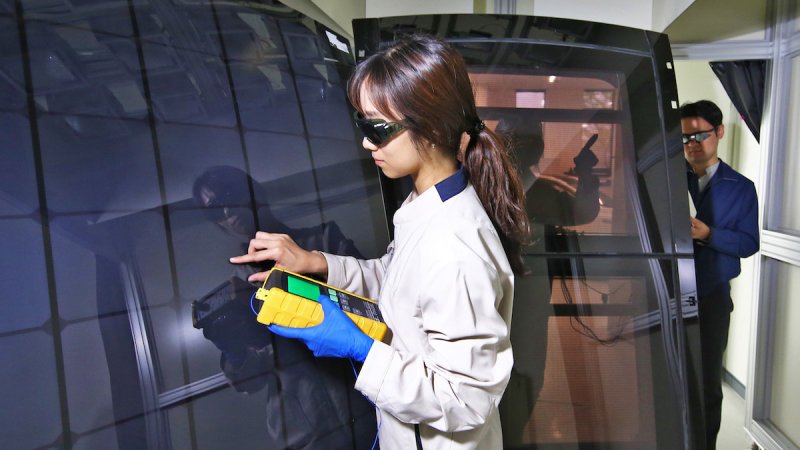Hyundai Motor Group said Wednesday that future Hyundai and Kia models will be equipped with solar panels capable of generating electricity as a way to increase fuel-efficiency and range and lower CO2 emissions.
Hyundai says the solar panels will feature in the rooftops or hoods of select vehicles "after 2019" and will supplement traditional internal combustion, hybrid and battery-electric vehicles. The parent group said it's developing three different types of solar roof charging systems comprised of a solar panel, controller and battery.
The first generation will be a silicon solar panel system mounted to the rooftops of hybrid models and capable of charging 30 to 60 percent of the battery per day, depending on weather conditions and other factors, starting as early as 2020. The second generation involves a semi-transparent solar roof system applied to a panoramic sunroof and capable of charging an electric-vehicle battery or a battery mounted on a gasoline engine. Hyundai says the latter configuration will help it increase vehicle exports, since solar-equipped ICE vehicles will be able to adhere to regulations limiting CO2 emissions.
A third-generation system is being tested right now. It will add solar production capability in the hood and roof of EVs – but the companies don't provide more detail than that at this moment.
"In the future, various types of electricity-generating technologies, including the solar charging system, will be connected to vehicles," said Jeong-Gil Park, executive vice president of engineering design at Hyundai Motor Group. "This will enable them to develop from a passive device that consumes energy to a solution that actively generates energy. The paradigm of the vehicle owner will shift from that of a consumer to an energy prosumer."
To date, solar vehicle charging technology has mostly been for light-duty tasks, like cooling off the interior or trickle-charging a conventional battery, such as the system offered in the previous Nissan Leaf. Systems that do more than this have typically come with a very steep pricetag for modest capabilities. Panasonic has developed a 180-watt solar roof available for the Japanese version of the Toyota Prius Prime plug-in hybrid that is capable of adding up to 3.7 miles of range per day – at an unspecified (as of this writing) but undoubtedly high cost. Elon Musk, unsurprisingly, has also discussed making a solar roof optional for the Tesla Model 3. Karma revived the Fisker Revero plug-in hybrid as its own nameplate, complete with a solar roof. And Audi has worked with a Chinese firm to develop solar cells into a sunroof for an upcoming EV.
Considering the modest output of solar panels small enough to fit on a vehicle's roof, and the high cost, it'll be interesting to see whether Hyundai and Kia can make a practical argument for this move, or if it's just a marketing move. Then again, all the easy efficiency plays have already been made, and any tiny gain adds up.

